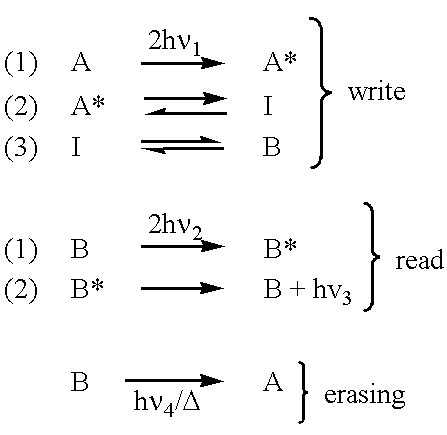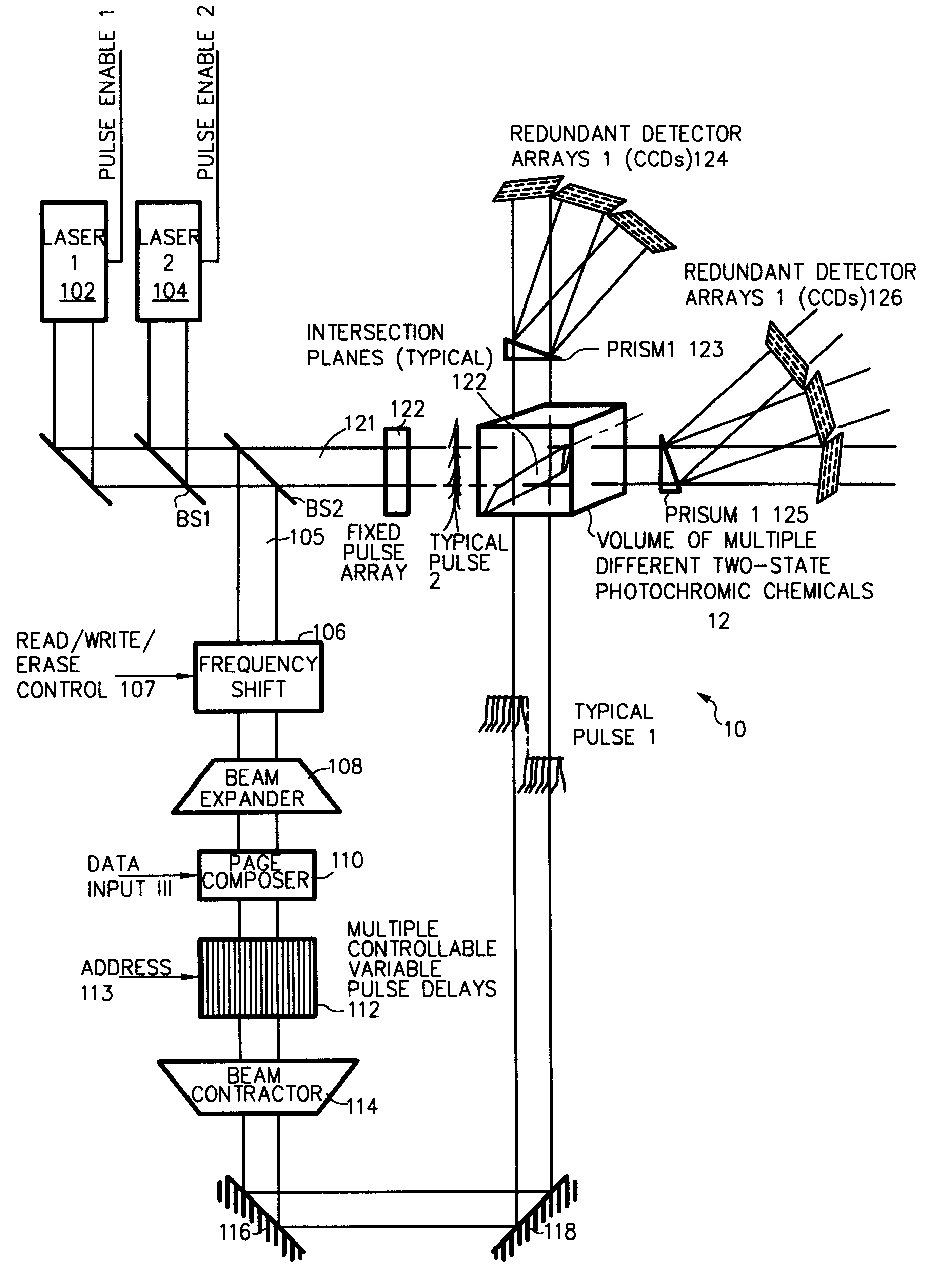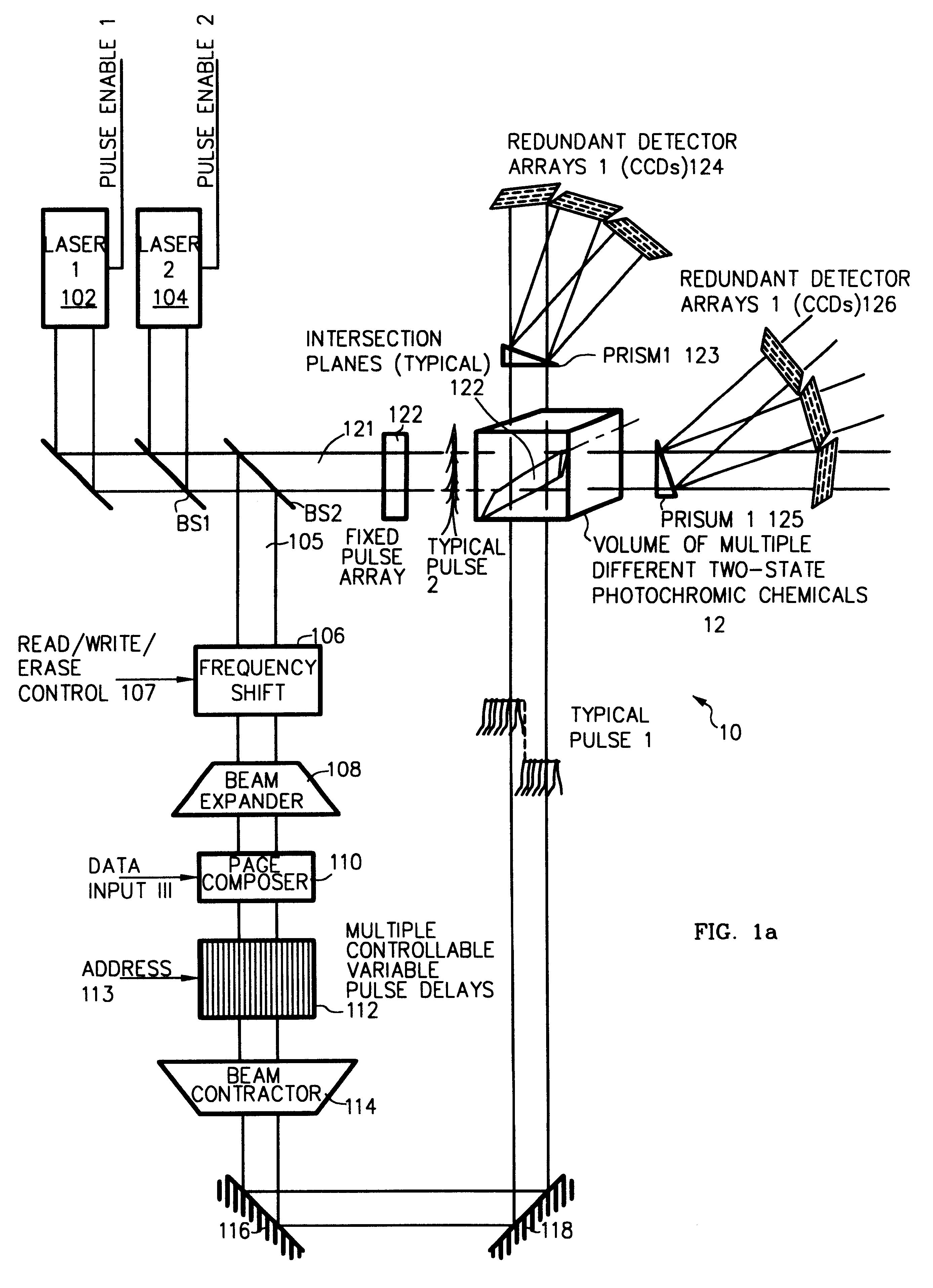Two-photon, three-or four-dimensional, color radiation memory
a color radiation and memory technology, applied in the field of radiation or optical memory apparatus, can solve the problems of background noise, inability to preferentially store volume, and no means by which light can intera
- Summary
- Abstract
- Description
- Claims
- Application Information
AI Technical Summary
Benefits of technology
Problems solved by technology
Method used
Image
Examples
Embodiment Construction
of a Color Radiation Memory
The present invention is useful of incorporation in substantially planar optical media, potentially optical tape but more typically optical discs. A mere factor of five or ten (.times.5 to .times.10) in (i) information storage density, and also (ii) in information readout speed, is not anticipated to appreciably alter the competitive balance between state-of-the art optical and magnetic media circa 1995. However, it must be realized that the entire annulus of an optical disc may be read through a lens to a massively parallel detector array (a CCD, or multiple CCD arrays in the case of the present invention) as is taught in U.S. Pat. No. 5,285,3438 for a MOTIONLESS PARALLEL READOUT HEAD FOR AN OPTICAL DISC RECORDED WITH ARRAYED ONE-DIMENSIONAL HOLOGRAMS--producing gigabyte data transfer rates from hundred dollar level components.
Optical discs may well be "dragging a lot of baggage", and may be somewhat impacted in their deployment, circa 1995 because many p...
PUM
| Property | Measurement | Unit |
|---|---|---|
| Curie point | aaaaa | aaaaa |
| wavelength | aaaaa | aaaaa |
| wavelengths | aaaaa | aaaaa |
Abstract
Description
Claims
Application Information
 Login to View More
Login to View More - R&D
- Intellectual Property
- Life Sciences
- Materials
- Tech Scout
- Unparalleled Data Quality
- Higher Quality Content
- 60% Fewer Hallucinations
Browse by: Latest US Patents, China's latest patents, Technical Efficacy Thesaurus, Application Domain, Technology Topic, Popular Technical Reports.
© 2025 PatSnap. All rights reserved.Legal|Privacy policy|Modern Slavery Act Transparency Statement|Sitemap|About US| Contact US: help@patsnap.com



